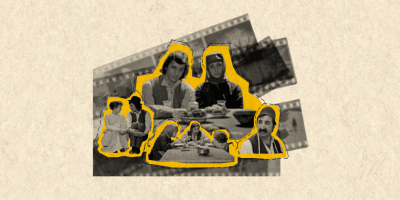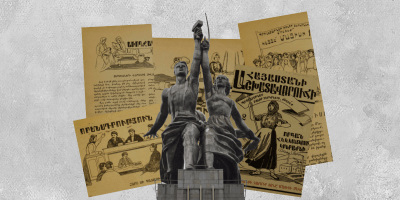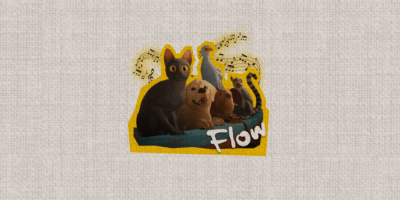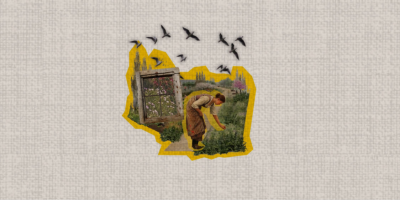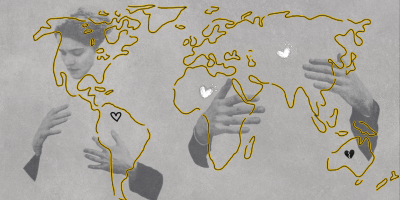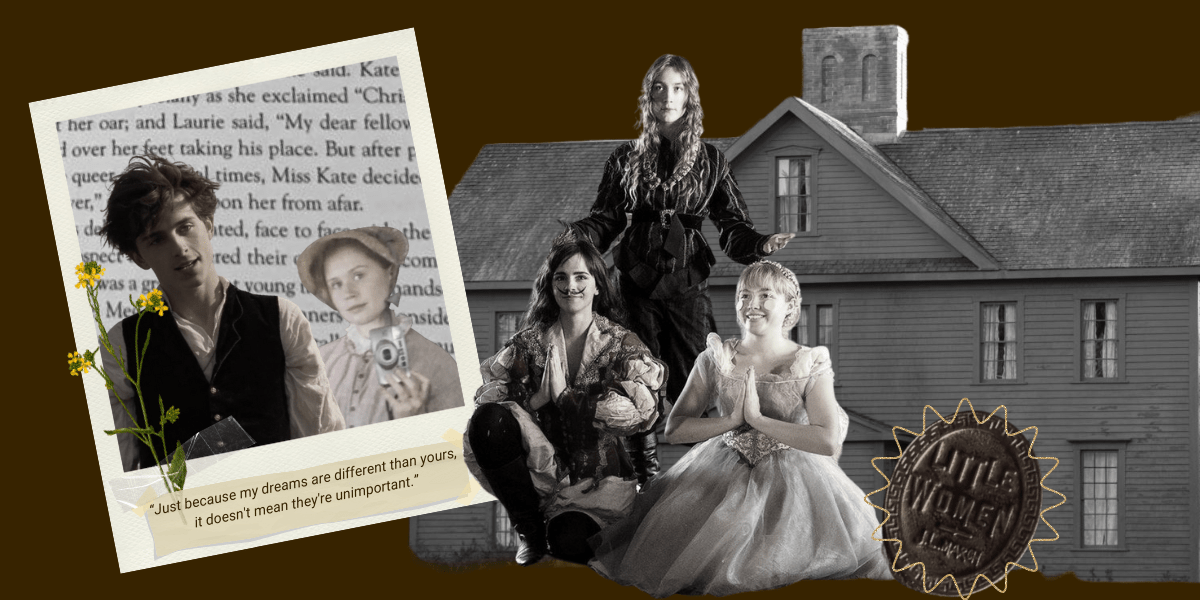
“If the main character is a girl, make sure she is married by the end,” says publisher Mr. Dashwood (Tracy Letts) to Josephine March (Saoirse Ronan) when she is pitching her story. Most women hear similar ingenious ideas from their own Mr. Dashwoods that marriage is essential to womanhood.
Greta Gerwig, an American director, successfully brought Louisa May Alcott’s novel Little Women into a live-action adaptation in 2019 with drama and romance to highlight those expectations on women of the 19th century- or of every century.
The story revolves around the protagonist, Jo March, and her sisters Meg (Emma Watson), Beth (Eliza Scanlen), and Amy (Florence Pugh). Jo is an aspiring writer who has moved to New York. Throughout her life, she struggles and is sick of the implications that women are only fit for love and marriage should be their ultimate goal. She, herself, would “rather be a spinster and paddle her own canoe.”
The movie goes back and forth between Jo being in New York and seven years before that, with her being with her sisters and mother, Marmee (Laura Dern), in Concord, Massachusetts. The sisters have a close relationship together, where they act in plays that Jo writes for them. They get acquainted with their neighbor Theodore Laurence (Timothée Chalamet), whom they call Laurie, except for Jo, who calls him Teddy, which reflects their close friendship. It is all fun and plays until they have to transition from childhood to womanhood, where they have to follow societal demands, either willingly or not.
Amy goes to Europe with Aunt March (Meryl Streep) to take painting lessons- well, at least that is what she thought- but also find a rich man that she could marry to fulfill Aunt March’s wish. Meg, on the other hand, marries Laurie’s tutor, John Brooke (James Norton), and Jo thinks that is the worst thing that could happen until something tragic happens to Beth – not going to spoil as Rachel did to Joey!
Coming back to our first little woman’s story, Teddy wanted to transform their friendship into a marriage, but the idea and feelings were not mutual. However, one might get déjà vu of Saoirse Ronan and Timothée Chalamet as Christine and Kyle in Lady Bird (2017), who also did not end up together like Teddy and Jo. Actually, we see some patterns repeating in both of Gerwig’s solo directorial movies.
Besides the leading actors being the same, Lady Bird is also a dramatic coming-of-age movie with a woman protagonist facing problems in her personal life, like relationships, both with her mom and guys, and constructing an identity. A parallel can be drawn with Jo, who struggles with the concept of marriage while also seeking an identity for herself that is beyond social norms. But, the ending takes an unexpected turn at the end when Jo chases an older man, Friedrich Bhaer (Louis Garrel). Shocking, I KNOW!
Any movie could fail if the costumes and cinematography are not done right. In fact, the second half of the queue of credits shown is as important as the first half. Jacqueline Durran, an Oscar-nominated costume designer, does a perfect job of bringing the 1860s fashion unto the dynamic cast. She clothes Jo in a more tomboyish style, Meg in lots of purple, Beth in earthly colors reflecting her character and Amy in more elegant dresses showing her being high maintenance.
In an interview with Harper’s Bazaar magazine, Durran revealed that they planned some exchange of clothing between the sisters or between Jo and Laurie to show their close relationship as well as their social status, meaning that they do not wear entirely new outfits every single time because they are not that well off. Those tiny details add zest to the story.
From patterns, colors, and fabrics to the lenses, filters, and angles that lead to the exquisite cinematography. Without subtitles needed, it is apparent each season that is demonstrated, making summer and spring brighter and using more contrast than winter and autumn for the audience to follow the timeline and flow of the story.
Moreover, since the movie jumps from future events to past events, the audience will not once feel lost because of the great editing and cinematography.
Gerwig’s adaptation is the best one yet out of all the book-to-movie transformations done on Alcott’s Little Women. Even though the story seems so simple that even Josephine herself is concerned about who is going to be interested in reading a story about sisters and their “domestic struggles and joy,” it still holds a great message. It highlights the expectations that are on women and marriages. And as Amy says, “Maybe it does not seem important because people do not write about them.”
Whether you’re little or big, whether you’re a woman or a man, you should do yourself a favor and watch this masterpiece.

